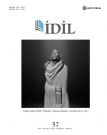ÇEVİRİ ELEŞTİRİSİNDE ÇEVİRMENİN SERÜVENİNİ GÖRME(ME) BİÇİMİMİZ
OUR WAY OF (NOT) SEEING THE ADVENTURE OF THE TRANSLATOR DURING TRANSLATION CRITICISM
Author(s): Aslı AraboğluSubject(s): Fine Arts / Performing Arts, Methodology and research technology, Translation Studies
Published by: Sanat ve Dil Araştırmaları Enstitüsü
Keywords: Translation; Translation Criticism; Invisibility of Translator;
Summary/Abstract: The purpose of this paper is to compose an interdisciplinary questioning by going through the methodological studies at the field of translation criticism with reference to discussions about the invisibility of the. Cause to the question the basic problematic is the simple comparisons which are formed by ignoring the subjectivity of the nature of translation. At this paper, by using John Berger's The Ways of Seeing (2018), like reproducing a picture, how indeed every translation is the reproduction of the original will be handled. Also from the argument of that; uniqueness of the original work is not the reason of what it says as a unique but derives from being a unique and how it is evaluated, how the translator is evaluated at translation criticism will be defined. Today many people who make translation critiques are literature critics, translators or scholars of social sciences in the field of translation studies. Sometimes critiques formed with statistical comparisons, which reject the subjectivity of the translation nature, ignore the position of the translator. As Berger says; while the painter's way of seeing is reconstituted by the marks he makes on the canvas or paper, every image embodies a way of seeing, our perception or appreciation of an image depends also upon our own way of seeing (Berger: 21). Thus, our way of seeing is the most important point that forms a translation critique. At the end of this paper, at translation criticism, the possible contributions to the field of translation studies by questioning and interpreting how the information, which are continually moved in, against the original, which always holds its own place, is translated as in the reproduced paintings and the adventure of the translator will be described.
Journal: İdil Sanat ve Dil Dergisi
- Issue Year: 8/2019
- Issue No: 57
- Page Range: 653-661
- Page Count: 9
- Language: Turkish

